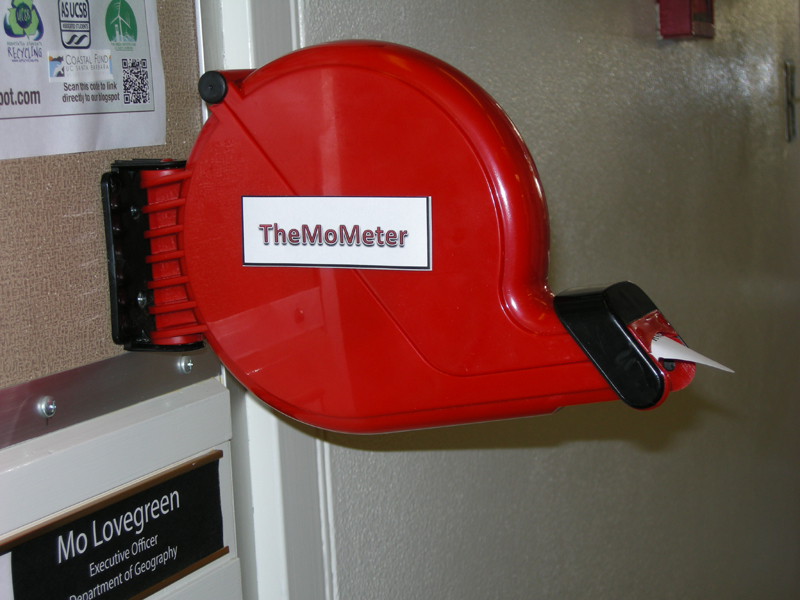Where to start? The wieners probably need the most explanation, so we’ll begin by blaming this entire article on UCSB Sustainability and its insistence on the three Rs of “Reduce, Reuse, Recycle.” The Ellison Hall Sustainability Committee is a coalition of all the staff, faculty, and students who use the Geography Department’s facility to reduce negative impacts of the building and the users on the environment, the economy, and society and to improve our contribution towards a sustainable campus–and their efforts in this cause have had dramatic effects.
But look out any south-facing window of Ellison Hall, and you’ll see something that seems at odds with sustainability—it’s that “eternal flame” monument whose gas-powered torch literally never goes out. Dylan Parenti, our IT major domo, is currently working with Sustainability staff to create a new layer of the Interactive Campus Map which will graphically display energy consumption on campus, and the proximity of the eternal gas emission struck him as ironic. Being a practical kind of guy who hates to see things go to waste, who has a good sense of humor, and who believes in the scientific method, Dylan suggested roasting wieners over the eternal flame. Why not?
With your editor as an assistant PI, Dylan proceeded to conduct a scientific field work study regarding the feasibility of using the UCSB eternal flame as an energy-saving means of preparing lunch on campus. Initial data from the “Wasted Energy Enables New Edibility Resource” (WEENER) project indicated that even moderate wind caused the flame to dance about and go on and off, making it difficult to cook a wiener to perfection in a reasonable amount of time, and that the heat source created an unacceptable amount of soot on the pilot study’s target. While the pilot study indicated that the eternal flame can cook a wiener successfully, further field studies are obviously necessary. The inclusion of marshmallows as a test subject in future field tests (SMOREWEENERS) is expected to provide a more definitive marker in the quantification and modeling of the original results.
Another issue regarding time and energy consumption in our fair Department is that of trying to gain an audience with our fair Executive Officer, Mo Lovegreen. Mo is swamped with committee meetings, phone calls, and an inevitable queue of people that form outside her office door waiting to ask for her call on departmental matters. To cut the Gordian Knot, your editor bought her a “take a number” dispenser which “Handy Randy” from Physical Facilities mounted just outside Mo’s door. The “TheMoMeter” is just the ticket, and, while it hasn’t eliminated Mo’s logistical problems, it’s added a lot of levity to her queue’s longevity.
On a more graphic note, the UCSB Geography Department’s web site has undergone some hot changes. For one, the original “slide show” on our home page has consisted of black and white images only for the past few years—very “with it” in web design circles at the time—but we’ve decided to use color as well from now on. Form follows function, after all. Let us know what you think.
Article by Bill Norrington






